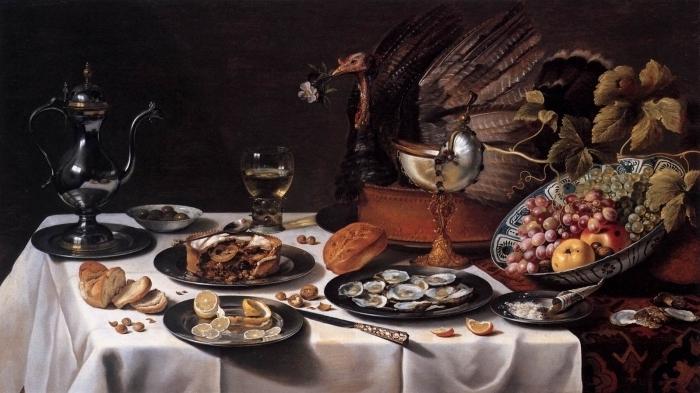" Still life" was called a still life in Holland . This is contrary to the fact that the name of the genre in translation from French means "dead nature". Why, then, in the mouths of the Dutch compositions from inanimate objects, vividly displayed on canvas, meant life? Yes, these images were so vivid, reliable and expressive that even the most inexperienced connoisseurs admired the realism, tangibility of the details. But it's not only that.

The Dutch still life is an attempt to talk about how vividly and closely each object, every particle of this world is woven into the complex world of a person and participates in it. Dutch masters created ingenious compositions and were able to accurately depict the form, color overflows, volume and texture of objects, so that they seemed to preserve the dynamics of human actions. Here is a feather with a gleaming drop of ink that has not yet cooled down by the poet’s hands, here is a cut pomegranate, tearing off ruby juice, and here is a bite bitten and thrown onto a crumpled napkin ... And at the same time, this invitation is enchanted to admire and enjoy the magnificence and diversity of nature.
Themes and picturesque images
The Dutch still life is inexhaustible in the abundance of themes. Some painters united in an addiction to flowers and fruits, others specialized in the rough likelihood of pieces of meat and fish, still others lovingly created kitchen utensils on canvas, while others devoted themselves to the theme of science and art.
Dutch still life of the early 17th century is distinguished by a commitment to symbolism. Items have a strictly defined place and meaning. The apple in the center of the image tells of the fall of the first man, the grape cluster covering him tells of the atoning sacrifice of Christ. The empty shell, once home to a marine mollusk, insists on the mortality of life, drooping and withered flowers - about death, and a butterfly that flies out of a cocoon announces the resurrection and renewal. In this manner, Balthazar van der Ast writes.
Artists of the new generation have already proposed a slightly different Dutch still life. Painting "breathes" the elusive charm lurking in ordinary things. A half-filled glass, serving items scattered across the table, fruits, and sliced pie - the reliability of the details perfectly conveys color, light, shadows, highlights and reflections, convincingly connected with the texture of fabric, silver, glass and food. These are the paintings of Peter Klas Kheda.

By the beginning of the 18th century, Dutch still life gravitated towards an impressive aesthetics of detail. Graceful porcelain bowls with gilding reign here, goblets from fancyly curled shells, fruits that are exquisitely laid out on a dish. You can’t look at the canvases of Willem Kalf or Abraham van Beyeren without fading. An unusually common Dutch still life with flowers is becoming . The flowers captured by the hand of the master speak a special, sensual, language and convey harmony and rhythm to the painting. The lines, weaves and shades of the stems, buds, open inflorescences present in the still life seem to create a complex symphony that makes the viewer not only admire, but also excitedly experience the incomprehensible beauty of the world.